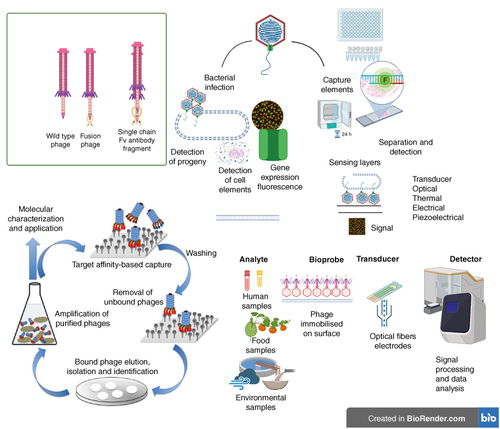Figures & data
Figure 1. Traditional and recent approaches of bacteriophages in diagnostics.
Bacteriophage-based methods are employed for bacteria detection, utilizing the unique properties of phages. Phages can infect target bacteria, and in cases of cell lysis, the detection can involve progeny phages or released cell content. Certain phages have the capability to introduce exogenous genes into bacteria, thereby labeling the host with a fluorescent, colorimetric, or optical marker for identification. Additionally, phages can be utilized to construct sensing layers in biosensors. By attaching bacteriophages to micro- or nano-particles, they can serve as capture elements in various assays, contributing to effective and specific bacteria detection methods.

